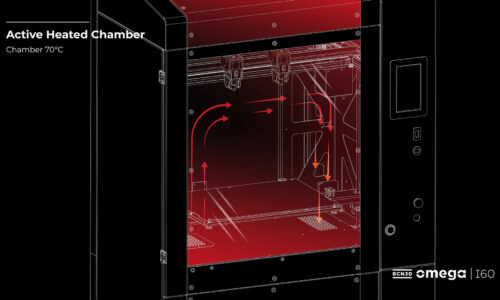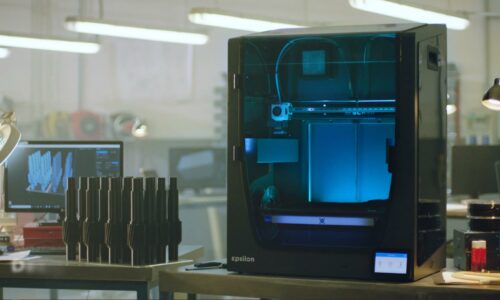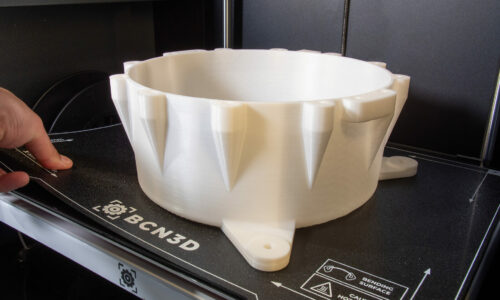Waterproofing 3D Prints: 5 Easy Solutions
Waterproofing 3D prints is no easy task, but it’s definitely not impossible!
Because FDM 3D printers deposit filaments one layer at a time, little gaps of space can naturally form between each layer. These tiny pockets make it hard to waterproof the model, however, there are a few different solutions you can use to try and overcome this.
Whether you need to make your print weatherproof, watertight, or water-resistant, there are a few techniques and solutions that will allow you to waterproof your 3D model. Let’s take a look!
5 Tricks for Waterproofing 3D Prints
There are five different methods you can use for waterproofing 3D prints, like using water-resistant filaments, printing thicker layers, over extruding, adding more perimeters, and printing less complex models. Let’s dive into each of these 5 tricks.
1. Choose Waterproof 3D print or Water-Resistant Materials
There are a few different 3D printing filaments you can use that will allow you to create waterproof 3D prints or water-resistant 3D models.
If your main need is creating water-resistant prints, then you can use these materials without much post-processing to make them waterproof. However, if your goal is to create a truly waterproof model, then using these materials along with the below techniques will be your best bet.
PP
PP is a thermoplastic 3D filament that is commonly used for creating food packaging, bottles, and containers. It is very lightweight, but don’t let this fool you. Whereas other materials absorb water over time, PP is hydrophobic, meaning it will repel water.
If your print needs to be watertight, PP is a good choice due to its flexibility and interlayer adhesion. This means it does not produce many gaps or holes in between layers when printing.
Along with being waterproof, it is highly resistant to other substances including aggressive chemicals such as alkali, acids, and organic solvents. In fact, PP is one of the strongest chemical-resistant 3D printing materials. It is also flexible and has good heat resistance.
PP GF30
If you need your 3D print to be weatherproof, then PP GF30 (Polypropylene 30% glass fiber) will be a great option. This 3D filament is not only waterproof, but it is resistant to highly aggressive environments, including high heat, UV, and chemicals.
The difference between PP GF30 and PP is the extra 30% glass fiber that is filled into the filament. This glass fiber allows PP GF30 to stay lightweight and water-resistant while adding in a bit of extra strength and rigidity. PP GF30 is commonly used in the automotive and aerospace industry.
PET-G
If you are printing a 3D model that needs to be watertight, then consider using PETG (Polyethylene terephthalate glycol-modified). Not only is this 3D filament water-resistant with a strong water and moisture barrier, but it is also a very easy material to print. It features the same ease of print as PLA, but with much stronger technical properties.
PET-G is commonly used for waterproof 3D prints like beverage bottles or liquid holding containers. Along with being waterproof, it is also impact-resistant and slightly flexible.
2. Print Thicker Layers
Along with choosing waterproof and water-resistant 3D printing materials, there are also a few ways you can waterproof your 3D prints using a few different techniques. One of those techniques is to print your layers a bit thicker.
Printing layers that are just slightly thicker than average can reduce the chance of leaking by reducing the interfaces of the print. The fewer interfaces there are, the fewer chances you have of any liquid leaking through. Consider adding an extra .150mm to your layers to reduce the interfaces. Printing with a wider extruder can help you produce thicker layers.
3. Over Extrude
Another similar technique for waterproofing 3D prints is to slightly over extrude the filament when printing. However, keep in mind that this solution will not work if you require very precise dimensions or are creating an end-use product.
Slightly over extruding the filament allows it to merge with the previously printed layers better. This is especially true if you are printing at extremely high heat, as they can melt together easier. While this is a strong waterproofing method, it does significantly impact the design quality of your print.
4. Add More Perimeters
If you need to waterproof your 3D print without significantly impacting the design, then consider adding more shells or perimeters around the model. This will provide more space and protection between your print and the water. Adding around 4-6 more shells will prevent leaking by creating a stronger barrier.
5. Print Less Complex Models
This may not always be a possibility, but another way to waterproof your 3D models is to produce less complex geometries. The more complex your print is, the more chances you give it for water to leak through.
Designs that have overhangs, sharp corners, or complex details leave more room for error in terms of gaps and layer adhesion. If it is possible to tame down the complexity of your print, then this may be a good solution if you need a truly waterproof model.
Final Thoughts
The best way to create a truly waterproof 3D print is to choose a strong waterproof and water-resistant 3D filament. But, by using a few different techniques and printing styles, you can increase the strength of your models and create the perfect waterproof design.




